Feature
In Florence’s Footsteps
From London landmarks to her family's country home
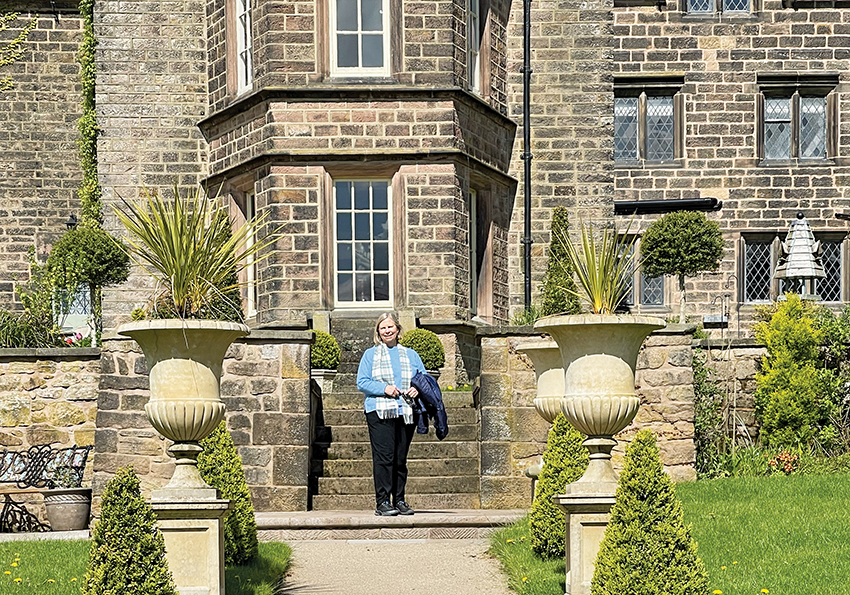
“IT BREAKS MY HEART TO LEAVE LEA HURST.”
— Florence Nightingale
After listening to a talk by two nurses who had visited spots in England related to Florence Nightingale — including her childhood home, Lea Hurst — a friend and I said, “Let’s do it!” So, in April and May of 2023, we did.
London Walking Tour
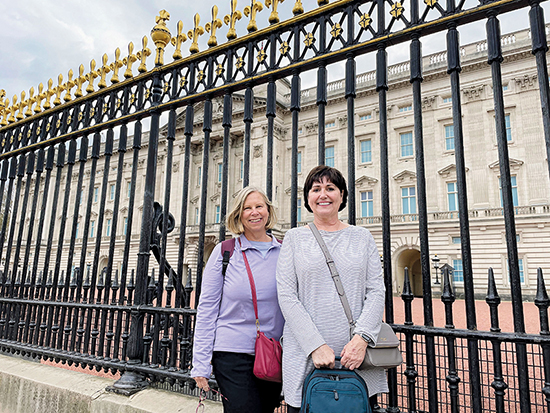
We began our trip with six nights in London, where we took a walking tour of places Florence lived and worked. Our guide was Blue Badge-certified and an expert on Florence Nightingale. She walked us by the Mayfair home where Florence lived for many years; Buckingham Palace, where she was received by Queen Victoria; the Florence Nightingale statue on Waterloo Place; the house where she spent her later years; and then via St. James’s Square, Whitehall, and Piccadilly to St. Thomas’ Hospital, where she founded her school of nursing.
Along the way, the guide discussed Florence’s role as a social reformer after her return from Crimea and her influence in Victorian society, which helped generate significant improvements in healthcare in England and beyond.
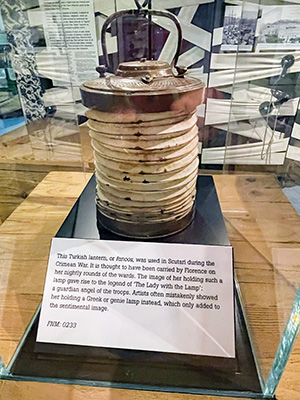
The Florence Nightingale Museum in London has many artifacts from her life, including her pet owl, Athena, and the actual lamp she used in Crimea. (This lamp is a Turkish lamp, a fanoos, not the genie-type lamp with which she is often depicted.)
Also on display were many of her letters and papers, illustrating her trend-setting use of statistics to make her case for improved healthcare practices.
While planning our trip, my friend and I had learned that Florence Nightingale’s family’s summer home, Lea Hurst, has been turned into a bed and breakfast! We contacted the owner, Peter Kay, and made reservations to stay there for three nights.
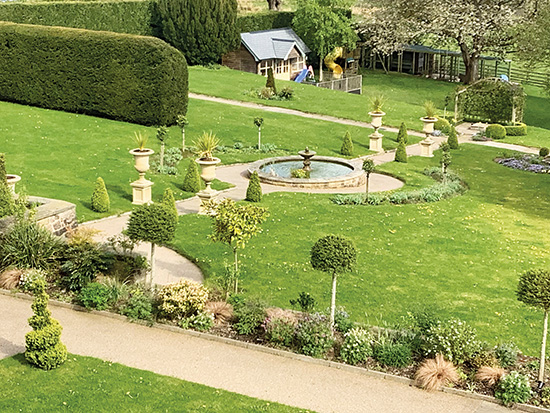
Lea Hurst is on the eastern slopes of the Derwent Valley in Derbyshire, a three-hour train ride from London. Upon arriving in Derbyshire, we were awed by the rolling green hills and the beauty of the area.
The Nightingale Family
Thomas Nightingale, a wealthy lead merchant, originally bought the land and manor of Lea in the early 1700s. His grandson, Peter Nightingale, bought Lea Hurst, and, through cotton-spinning and lead smelting, amassed a substantial fortune. Peter died without children, leaving his estate to his great-nephew, William Shore.
William changed his name to Nightingale, married, and had two daughters: Parthenope and Florence, named for their birthplaces.
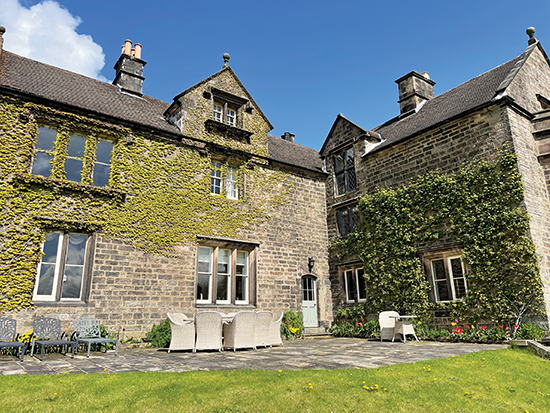
William transformed the family’s farmhouse at Lea Hurst into a 15-bedroom country home. Later, William’s wife Frances, Florence’s mother, decided that Lea Hurst was not large enough or socially-connected enough, so the family moved to an 80-bedroom home in Hampshire, nearer to London. They kept Lea Hurst as a summer retreat, usually spending about three months there each year.
It was there in 1854 that Florence read about the war in Crimea and decided she must go to help. It was to Lea Hurst that she returned — deciding, according to legend, to walk from the Whatstandwell train station with her luggage, a 45-minute trek. And, it was at Lea Hurst that Florence cared for her mother until Frances’s death.
After that, Florence lived in London, overseeing the Training School for Nurses she had started in 1859.
A Very Special Bed & Breakfast
Lea Hurst remained in the Nightingale family until the mid-1940s. It was purchased by the Royal Surgical Aid Society in 1951 and used as a nursing home for over 50 years.
In 2011, Peter Kay, a former banker from Wales, bought Lea Hurst and began amassing Florence artifacts and memorabilia, as well as furniture from the Nightingale era. He and his wife Jenny live in the home with their four children, and have converted some of the rooms into four separate guest suites.
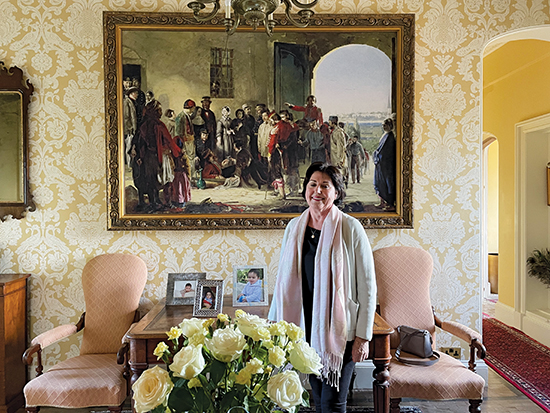
During our stay, we were greeted in the main hall by a print of Mission of Mercy: Florence Nightingale Receiving the Wounded at Scutari, painted in 1857 by Jerry Barrett (the original hangs in London’s National Portrait Gallery). Florence’s actual desk is in the study, from which one can view sweeping vistas with trees, hedges, gardens, and a fountain.
We had tea in one of the living rooms in front of the fireplace, read books about Florence, and walked the beautiful paths of Lea Woods. We climbed over old gateposts and rock walls to find the place Florence used to sit — Florence’s Seat, overlooking the Derwent Valley.
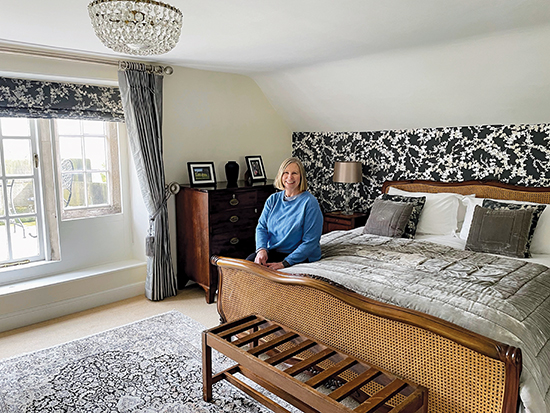
This trip was a small glimpse into Florence Nightingale’s life, which left us eager to return. Florence was truly a remarkable person, and the Kays were extremely gracious hosts at beautiful Lea Hurst.
You can learn more about the house’s history at florencenightingale.org. If you’re interested in arranging to stay at Lea Hurst, visit florencenightingalesuites.co.uk.
REBECCA SANDERS, RN, MSN, CNML, has worked as a nurse since 1976 in critical care, emergency, and management positions. She is the coordinator for the Helping Our People Elevate (HOPE) Program in San Joaquin County.
In this Article: Historical Nurses


